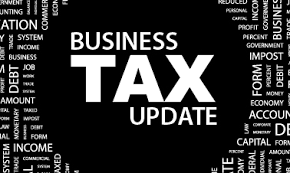 I have put together a handy tax update so you can ensure none of the following taxation topics have slipped past your radar.
I have put together a handy tax update so you can ensure none of the following taxation topics have slipped past your radar.
Fuel tax credits
Fuel tax credit rates increased on 1 August, so don't forget to use the new rates to calculate your claims on your next business activity statement (BAS).
If you claim less than $10,000 in fuel tax credits each year, you can use the ATO’s simplified methods to keep records and calculate your claims.
Use the rate that applies at the end of the BAS period
When there is a change of rate during the business activity statement (BAS) period (for example, in February and August), you can calculate your fuel tax credit claim by using the rate that applies at the end of the period.
There is no need to split your fuel purchases during the period and use two different rates. Simply total your litres for the period and use the rate that is current on the last day of the BAS period to work out your claim.
To work out the quantity of fuel you purchased in a tax period, you can simply use the total cost of fuel you purchased in the BAS period, divided by the average price per litre for the BAS period.
Calculate your litres as follows:
Litres = Total cost of fuel purchased ÷ Average price of fuel
You can find out the average weekly retail fuel price for your area by using aip.com.au.
Simplified record keeping
You can use the following records to substantiate claims of less than $10,000 per year:
- Contractor statement – where an amount for fuel used in the performance of services is deducted from the amount payable for the services
- Financial institution statements (business or personal credit/debit accounts) – where only the dollar amount is displayed on the statement
- Point-of-sale docket – where the docket either does not itemise the quantity of fuel dispensed or the quantity is illegible
- Fuel supplier statement or invoice – where only the dollar amount is displayed on the statement
Simplified methods for all claims
Heavy vehicles used mainly off public roads
If your vehicle is on the list of heavy vehicles that the ATO considers are used mainly off public roads (for example, a harvester or backhoe) you no longer need to apportion on and off-road travel when calculating your fuel tax credit claim.
You can claim all fuel used in these vehicles at the 'all other business uses' rate, even if you sometimes drive the vehicle on a public road.
Fuel used to power auxiliary equipment
If you use fuel to power the auxiliary equipment of a heavy vehicle (for example, a concrete mixing barrel or elevated work platform), you can use a percentage that the ATO has set to work out how much fuel is used for powering this equipment.
When you use these percentages, you don't need to do complex calculations or sample testing to work out how much fuel is used for the auxiliary equipment.
Instant asset write off
The $20,000 threshold has been recently extended to 30 June 2019.
If you buy an asset and it costs less than $20,000, you can write off the business portion in your tax return for the relevant income year.
You are eligible to use simplified depreciation rules and claim an immediate deduction for the business portion of each asset (new or second hand) costing less than $20,000 if:
- You had a turnover less than $10 million (increased from $2 million on 1 July 2016), and
- The asset was first used or installed ready for use in the income year you are claiming it in
Assets that cost $20,000 or more can't be immediately deducted. They will continue to be deducted over time using the general small business pool. You write off the balance of this pool if the balance (before applying any other depreciation deduction) is less than $20,000 at the end of an income year.
The $20,000 threshold applies from 12 May 2015 to 30 June 2019 and reduces to $1,000 on 1 July 2019.
New rate for car expenses
The rate for work-related car expenses has increased for the income year starting 1 July 2018. It is now 68 cents per kilometre.
This applies if you have chosen to use the cents per kilometre method for calculating work-related car expenses.
If you are paying your employees a car allowance in excess of 68 cents per kilometre, you need to withhold tax on the amount you pay over 68 cents.
Eligibility changes for lower company tax rate
From the 2017–18 income year, you must be a base rate entity to be eligible for the lower 27.5% company tax rate. A base rate entity must have:
- A turnover less than $25 million (this turnover threshold increased to $50 million from 2018-19), and
- 80% or less of its assessable income as passive income (for example, interest, dividends or rent). This replaces the 'carrying on a business' test
What you need to do
- Check if your company has earned 80% or less passive income and if so apply the lower rate of 27.5% when completing your company tax return (if you have more, apply the general rate of 30%)
- If you've already lodged your 2018 company tax return using the incorrect rate, you will need to make an amendment
- When working out the company tax rate to use for franking your distributions, use your previous year's turnover, assessable income and base rate entity passive income
- If you’ve issued distribution statements using the incorrect rate, you should tell your shareholders the correct dividend and franking credit amounts as soon as possible. You should also let us know the correct amounts through your company's annual dividend reporting process
More information
For more information on managing your tax commitments, please contact Ian Walker at Archer Gowland on 07 3002 2699.
%20-%20HubSpot%20(1).png)
